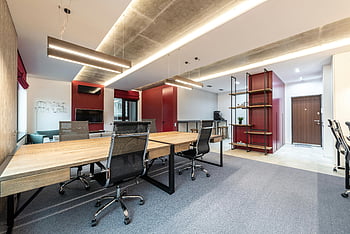Workplace devices refers to the equipment and technology employed in offices to streamline day-to-day tasks, boost efficiency, and sustain smooth workflow. Whether in a corporate setting, small enterprise, or home office, these tools are instrumental in simplifying processes and enhancing employee output.
Fundamental Office Tools At the core of any workplace arrangement are essential items like computers, printing devices, telephones, and fax devices. Desktop computers serve as the nerve center of today's offices, allowing staff to create documents, manage data, and interact with colleagues. Printers and scanners support document processing, while phone systems and fax devices allow for communication, particularly in conventional work environments.
 Additionally, copiers are vital for producing duplicates of important documents. Office furniture such as desks, chairs, and filing cabinets also form part of the standard equipment, providing ease and structure. Ergonomically designed workspace chairs and desks improve posture, reducing the risk of health issues for employees.
Additionally, copiers are vital for producing duplicates of important documents. Office furniture such as desks, chairs, and filing cabinets also form part of the standard equipment, providing ease and structure. Ergonomically designed workspace chairs and desks improve posture, reducing the risk of health issues for employees.
Advances in Office Technology With technological improvements, office equipment has evolved. Cloud computing platforms, for example, have significantly reduced the need for traditional filing systems, making it easier for companies to save data online. Meanwhile, remote communication devices such as cameras, microphones, and software platforms like Zoom or Teams have become essential, particularly in flexible work settings.
Boost to Workplace Efficiency Equipping the office with advanced gear goes beyond just buying tools, but also about increasing efficiency. Top-tier office tools reduce time wastage, minimizes mistakes, and improves workflow. For instance, an efficient printer is able to manage high document volumes swiftly, while multifunction devices merge the functions of printing, scanning, and faxing into a single unit, cutting down on excess equipment and enhancing usability.
In summary, office tools are essential in ensuring smooth business operations. Choosing appropriate tools and adapting to new technology, businesses can optimize their performance, cut down on overhead, and create a more productive work environment.
Fundamental Office Tools At the core of any workplace arrangement are essential items like computers, printing devices, telephones, and fax devices. Desktop computers serve as the nerve center of today's offices, allowing staff to create documents, manage data, and interact with colleagues. Printers and scanners support document processing, while phone systems and fax devices allow for communication, particularly in conventional work environments.
 Additionally, copiers are vital for producing duplicates of important documents. Office furniture such as desks, chairs, and filing cabinets also form part of the standard equipment, providing ease and structure. Ergonomically designed workspace chairs and desks improve posture, reducing the risk of health issues for employees.
Additionally, copiers are vital for producing duplicates of important documents. Office furniture such as desks, chairs, and filing cabinets also form part of the standard equipment, providing ease and structure. Ergonomically designed workspace chairs and desks improve posture, reducing the risk of health issues for employees.Advances in Office Technology With technological improvements, office equipment has evolved. Cloud computing platforms, for example, have significantly reduced the need for traditional filing systems, making it easier for companies to save data online. Meanwhile, remote communication devices such as cameras, microphones, and software platforms like Zoom or Teams have become essential, particularly in flexible work settings.
Boost to Workplace Efficiency Equipping the office with advanced gear goes beyond just buying tools, but also about increasing efficiency. Top-tier office tools reduce time wastage, minimizes mistakes, and improves workflow. For instance, an efficient printer is able to manage high document volumes swiftly, while multifunction devices merge the functions of printing, scanning, and faxing into a single unit, cutting down on excess equipment and enhancing usability.
In summary, office tools are essential in ensuring smooth business operations. Choosing appropriate tools and adapting to new technology, businesses can optimize their performance, cut down on overhead, and create a more productive work environment.